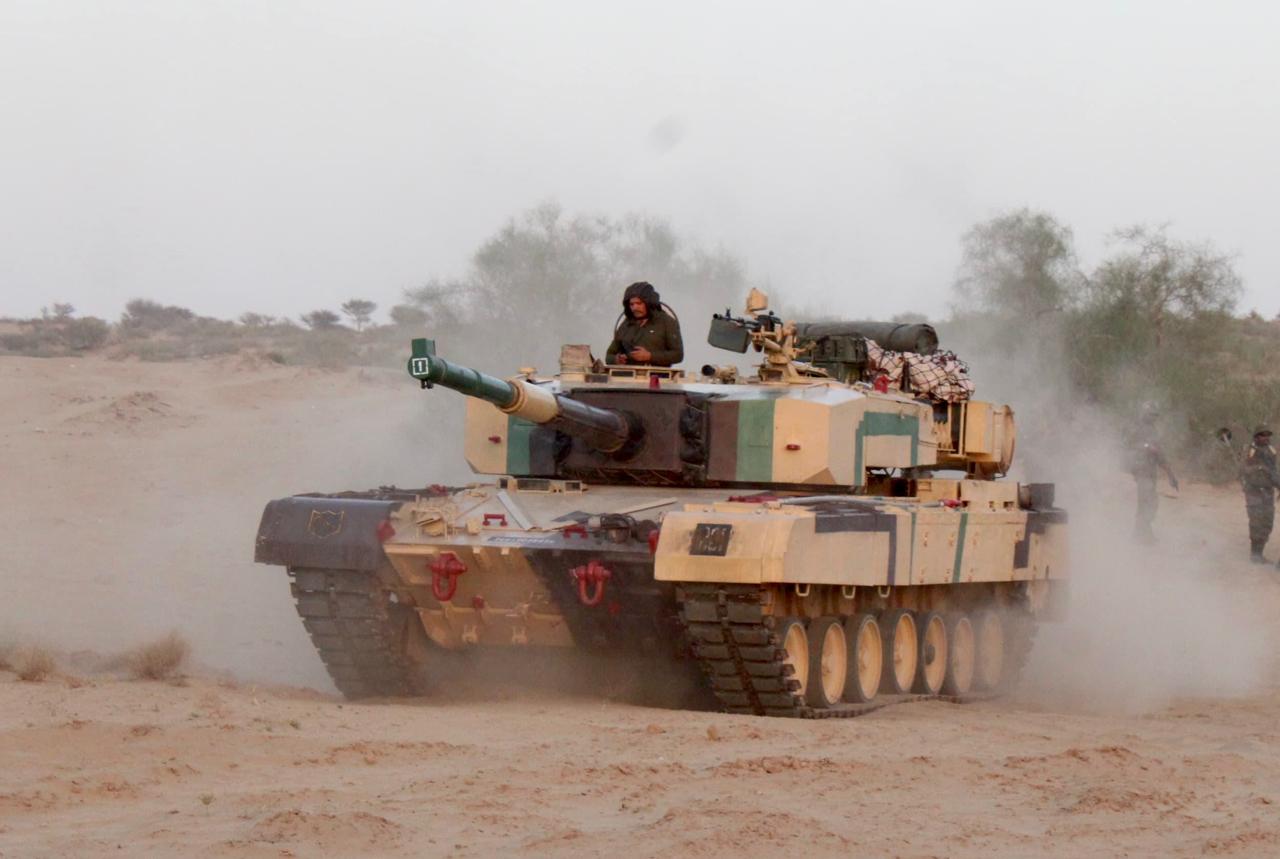The Battle Axe Division of the Indian Army, under the aegis of the Konark Corps, successfully completed a rigorous joint training exercise in the deserts of Rajasthan, focusing on enhancing tactical skills and battlefield drills for sustained operations. The exercise, which involved Mechanised Forces and Infantry units, was designed to ensure combat readiness in the challenging desert terrain, a strategically critical region along India’s western border.
The training emphasized seamless coordination between tanks, infantry, and support units, with operations conducted through both day and night to simulate real-world combat scenarios. Visuals from the exercise highlighted tanks maneuvering through sandy dunes, accompanied by infantry squads practicing tactical movements, and the use of advanced technology to support desert warfare. The theme of the exercise, “Invincible Together,” underscored the importance of joint operations in achieving battlefield dominance.
The Konark Corps, also known as the Desert Corps, has a storied history of defending India’s desert sectors in Rajasthan and Gujarat. Established on February 26, 1987, during Operation Trident, the corps played a pivotal role in the 1971 Indo-Pak War, capturing 9,000 square kilometers of enemy territory. Headquartered in Jodhpur, the corps continues to be a cornerstone of India’s defense strategy in the region. This recent exercise is part of the Indian Army’s ongoing efforts to maintain operational superiority in the desert, especially amid evolving geopolitical challenges.
The participation of the Border Security Force (BSF) Artillery, a unique unit among Central Armed Police Forces for having its own artillery regiment, further strengthened the joint operational framework. The exercise also showcased the integration of modern technology, with advanced radar systems and heavy artillery in action, illuminating the desert landscape during nighttime drills.
This training comes on the heels of an Integrated Firepower Exercise conducted by the same division in April 2025, which also demonstrated the Indian Army’s combat capabilities in harsh terrain. Military experts note that such exercises are crucial for preparing forces to operate in the desert sector, where extreme temperatures, limited visibility, and vast expanses pose significant challenges.
The Indian Army has a long-standing tradition of training its units for diverse terrains, with specialized schools like the desert warfare school in Rajasthan and the High Altitude Warfare School in Kashmir. Units like the Para (Special Forces), including the 10th Battalion (Desert Scorpions), have historically excelled in desert operations, conducting deep raids during the 1971 war and now training international forces in similar environments. This exercise by the Battle Axe Division reinforces India’s commitment to maintaining a robust defense posture while fostering interoperability among its forces.













